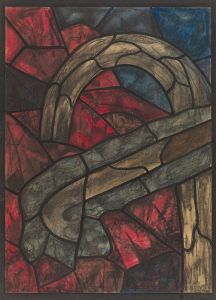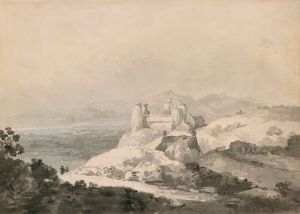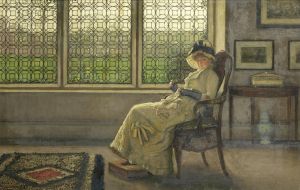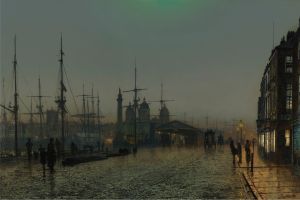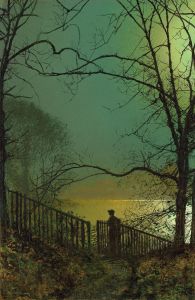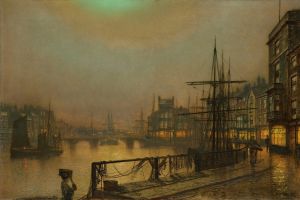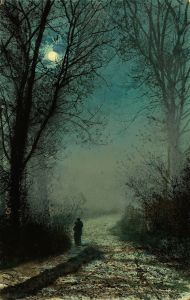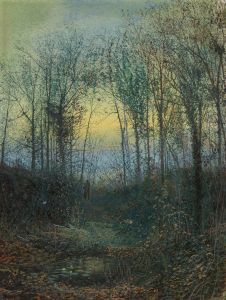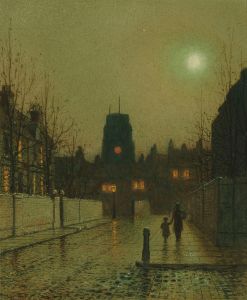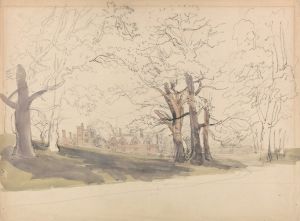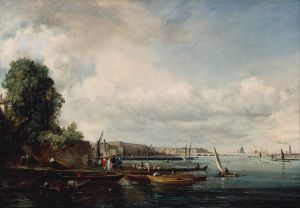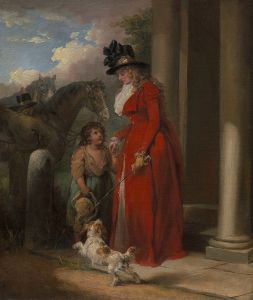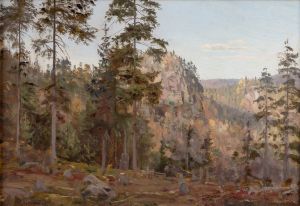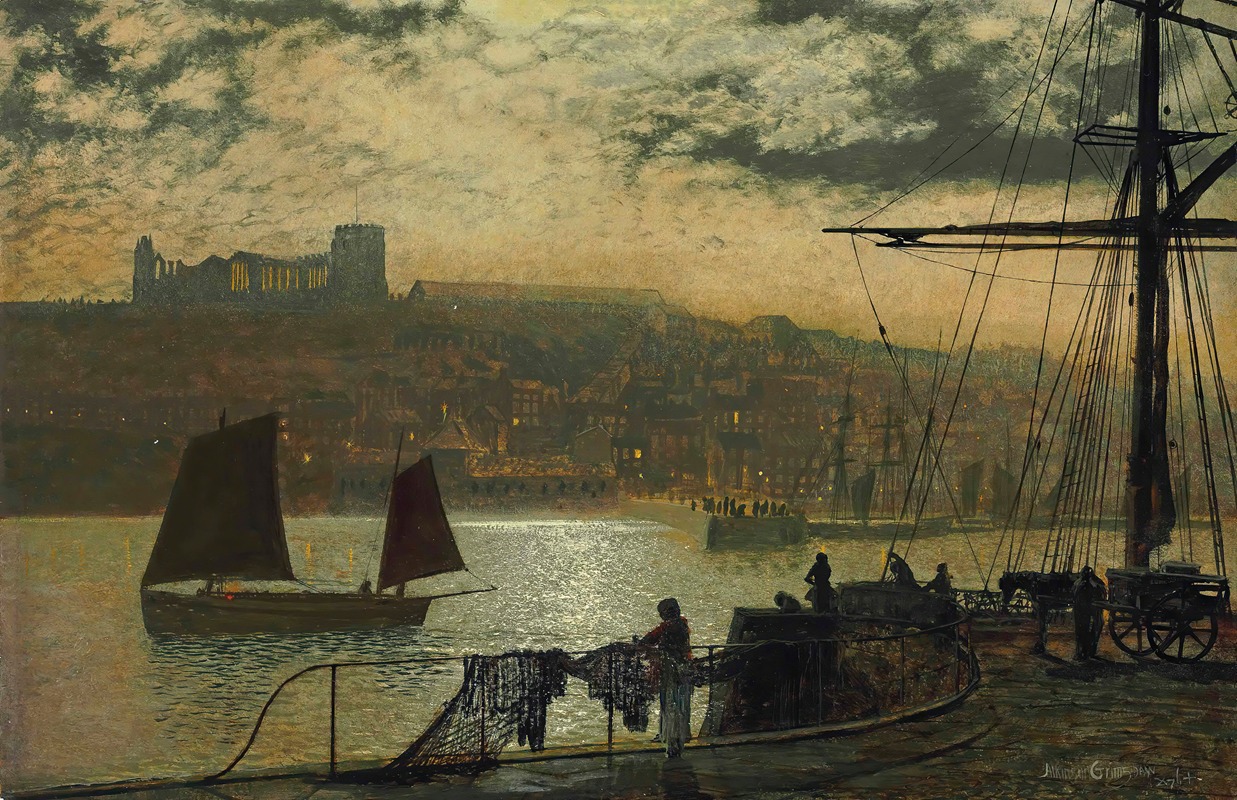
Whitby Abbey And Church
A hand-painted replica of John Atkinson Grimshaw’s masterpiece Whitby Abbey And Church, meticulously crafted by professional artists to capture the true essence of the original. Each piece is created with museum-quality canvas and rare mineral pigments, carefully painted by experienced artists with delicate brushstrokes and rich, layered colors to perfectly recreate the texture of the original artwork. Unlike machine-printed reproductions, this hand-painted version brings the painting to life, infused with the artist’s emotions and skill in every stroke. Whether for personal collection or home decoration, it instantly elevates the artistic atmosphere of any space.
John Atkinson Grimshaw's painting Whitby Abbey and Church is a work by the renowned British artist known for his atmospheric and detailed landscapes. Grimshaw (1836–1893) was a Victorian-era painter celebrated for his ability to capture mood, light, and intricate architectural details, often focusing on urban and rural scenes under moonlight or twilight.
This particular painting depicts Whitby Abbey, a historic monastery located in Whitby, North Yorkshire, England. The abbey, founded in 657 AD, is a prominent Gothic ruin that has inspired artists, writers, and poets for centuries. It is famously associated with Bram Stoker's 1897 novel Dracula, although Grimshaw's painting predates the novel. The abbey's dramatic silhouette and its location on a cliff overlooking the North Sea make it a striking subject for artistic representation.
Grimshaw's work often features a meticulous attention to detail and a mastery of light and shadow, and Whitby Abbey and Church is no exception. The painting captures the abbey in a moody, atmospheric setting, likely under a twilight or moonlit sky, which is characteristic of Grimshaw's style. The interplay of light and dark enhances the sense of mystery and timelessness surrounding the historic site. The inclusion of the church in the composition further emphasizes the spiritual and historical significance of the location.
Grimshaw's artistic approach often involved the use of photographic references and preparatory sketches, allowing him to achieve a high level of realism in his works. However, he also imbued his paintings with a sense of romanticism, creating evocative scenes that transcend mere documentation. His ability to balance realism with mood and emotion has made his works enduringly popular.
While specific details about the creation date or the current location of Whitby Abbey and Church are not readily available, the painting is representative of Grimshaw's broader body of work, which frequently explored themes of history, architecture, and the interplay between nature and human-made structures.
Grimshaw's legacy as an artist lies in his unique ability to capture the essence of a place and time, and Whitby Abbey and Church stands as a testament to his skill and vision. The painting remains an example of how art can preserve and celebrate historical landmarks, offering viewers a glimpse into the past through the lens of an artist's interpretation.





